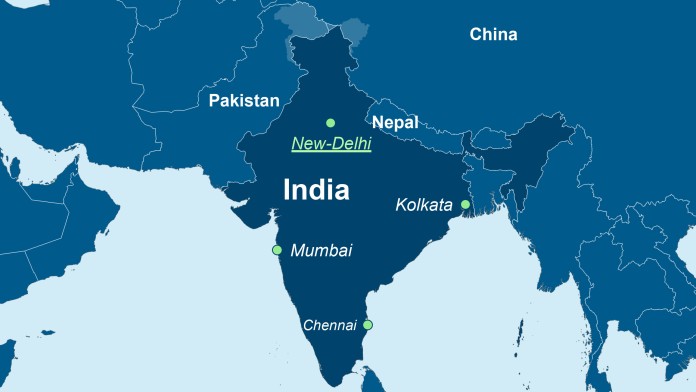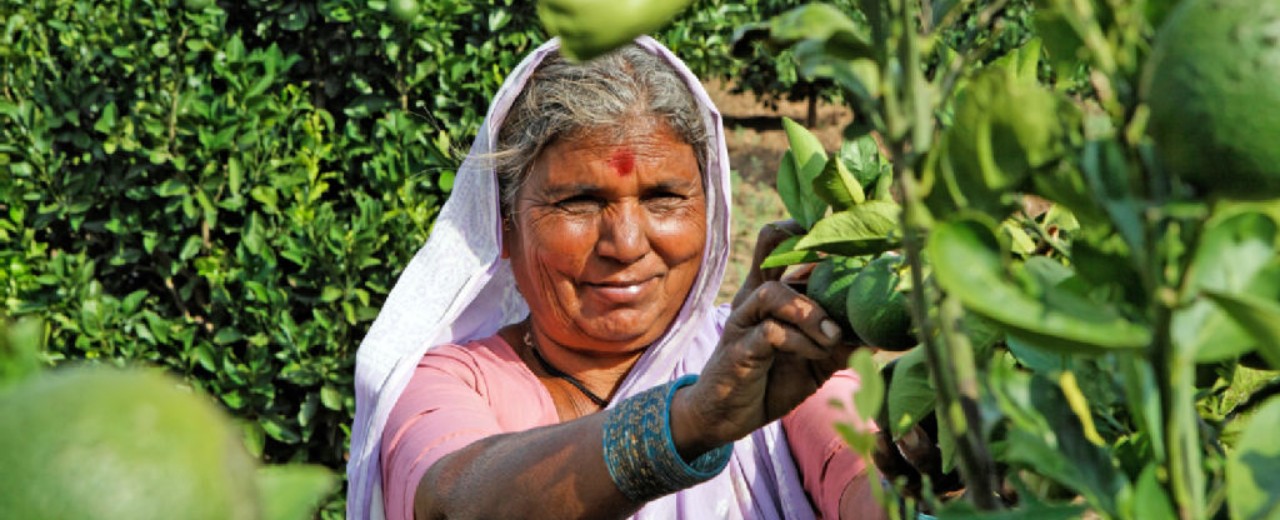Tip: Activate javascript to be able to use all functions of our website

As of: 09/2022
India is a country of contrasts. The cities are home to skyscrapers, high-tech and IT companies; in the villages, many make their living from agriculture. The upper and middle classes are growing while around 400 million Indians are still considered to be living in extreme poverty. Poverty is especially acute in rural areas. Farms are often very small, the soil often degraded. Drought and floods contribute to this deterioration.
Working on behalf of the German Federal Government, KfW is promoting more sustainable, climate-resilient agriculture for smallholdings in the state of Andhra Pradesh. It is also providing EUR 20 million to support the foundation of the Indo German Global Academy of Agroecology Research and Learning (IGGAARL ). The research results aim to assist in improving the living conditions of rural populations.
India’s rural population is growing, but it often lives in poverty. With many soils degraded, it is becoming increasingly difficult to generate sufficient income from agriculture. Many of the six million farming families in the Indian state of Andhra Pradesh are desperate because they are trapped in debt. They can no longer afford to pay for mineral fertilisers and pesticides, while at the same time the yields from the depleted soils are declining. This is compounded by the impacts of climate change and extreme weather events – rainfall is less frequent but heavy rainfall and storms occur more often.
Nature-based, ecological cultivation offers a way to reestablish the layers of humus and regenerate soil life. Since 2016, the Government of Andhra Pradesh (GoAP) has championed the expansion of community-managed natural farming, a regenerative farming approach. So far, around 600,000 farmers have adopted these nature-based methods. The aim is to convince six million people to convert their farmland.

The project aims to help stabilise and increase the long-term incomes of around 120,000 predominantly extremely poor farming families in Andhra Pradesh. The change in farming practices improves the climate resilience of farms while making the soil more fertile at the same time. Working on behalf of the Federal Ministry for Economic Cooperation and Development (BMZ), KfW has already issued a loan of over EUR 90 million and provided a grant of EUR 1 million. In line with a “results-based approach”, the funds will only be released once the agreed objectives have been met.
A substantial proportion of the agricultural work is largely carried out by women, and they have teamed up to form self-help groups. The Farmers’ Empowerment Organisations (Rythu Sadhikara Samstha), a state agency, advises these groups, which also promote the nature-based approach, so that it can be adopted by other villages. This is because there are still reservations about agroecological methods. In practice, farmers use mixed crops and natural resources such as cow manure, plant extracts and mulch to revitalise the soil. Mulching retains the moisture in the soil. The aim is to keep the soil covered and protected all year round.
In collaboration with the new IGGAARL research centre, also funded by KfW, the farmers evaluate their experiences using the different farming practices and develop them further. In addition, this institution shares the results with agricultural schools, universities and other research institutions throughout India. The research results can also be applied in other regions of the world that have similar climatic conditions.
The project is helping to revitalise soil and improve disease resistance in crops. As a result of the nature-based cultivation, the crops have more developed with stronger root systems, which help them to withstand cyclones and droughts. Regenerated soil makes it easier for plants to draw on nutrients, the layer of humus builds up and soil life is enhanced. There are more earthworms, bacteria, fungi, algae and single-celled organisms and these create more fertile soil. The selection and cultivation of resistant crops also helps to stabilise yields and minimise crop failure. This also helps in the adaptation to climate change.
Meanwhile, the approach is increasingly attracting attention in other Indian states, too. The accompanying research evaluates its level of success and regularly investigates the impact on income and the environment. IGGAARL research also helps to gather evidence on the effectiveness of agroecological methods so that they can be replicated elsewhere. In the long term, the research results from India will help families of smallholders in other regions with similar climates to increase both their yields and their incomes.
The project contributes to the achievement of these following United Nations Sustainable Development Goals:
KfW Group
KfW Development Bank
iris.harder@kfw.de
+49 69 7431-6455
Share page
To share the content of this page with your network, click on one of the icons below.
Note on data protection: When you share content, your personal data is transferred to the selected network.
Data protection
Alternatively, you can also copy the short link: https://www.kfw-entwicklungsbank.de/s/enzBYzC4
Copy link Link copied